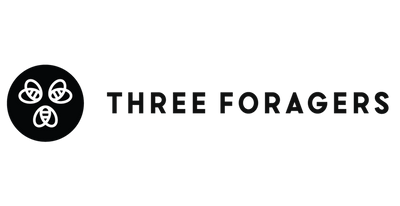

· By Three Foragers
Comparing Raw Honey To Refined Sugar
The next time you reach for a sweetener to put in your morning coffee, consider using raw honey.
After comparing these products side by side, we see that raw honey has several benefits over its refined counterpart. You can also substitute raw honey in your baked goods, and use it to make a natural homemade body scrub!
To understand why raw honey is a superior sweetener, we must first understand how these products are processed.
Processing Differences
White sugar comes from the sugar cane plant. This plant is grown, harvested, and transported to a sugar mill where it is washed, cut, and crushed. This separates all of the fibre from the sugar cane juice.
The juice is boiled to remove all of the excess water. Then the mixture is crystallized and moved into centrifuges where centripetal forces squeeze out any remaining liquid. The sugar is then purified, decolourized, recrystallized, and dried in a large granulator.
Next, the sugar is screened to remove any impurities or debris and to correctly size the sugar for packaging. After packaging, the sugar is shipped all over the globe.
The process of creating sugar is energy-intensive and it strips out any beneficial vitamins, minerals, and fibre. The distance of the sugar cane source from your grocery store also adds shipping pollution to the overall cost of this popular sweetener.
How Raw Honey Is Processed
The processing steps for raw honey are quite different. At our honey farm, bees collect nectar from alfalfa, sweet clover, and wildflowers and then deposit this nectar in honeycombs. The bees use their wings to fan off most of the moisture, creating honey that is made up of about 18% water. This prevents the fermentation process from happening. The bees then cap the honeycombs with beeswax.
When raw honey is ready for harvesting, we collect the honeycomb, cut off the caps, and extract the honey. We filter it to remove any impurities like beeswax and then bottle it.
Since our raw honey is unpasteurized, all of the beneficial nutrients and enzymes are left inside the honey. White sugar is stripped of any health benefits during processing and results in a product with empty calories.
Nutritional Makeup
White sugar is made up of carbohydrates. One teaspoon (4.2g of sugar) contains 4.2g grams of carbs, no fat, no protein, no fibre, no vitamins, and no minerals. This is why the term “empty calories” is applied to sugar: there’s just nothing in it.
Raw honey, on the other hand, contains a number of nutrients like amino acids, vitamin B6, thiamine, niacin, riboflavin, pantothenic acid, calcium, copper, iron, magnesium, manganese, phosphorus, potassium, sodium, zinc, enzymes, and antioxidants called polyphenols. Polyphenols are antioxidants that help fight off certain diseases like heart disease and some forms of cancer.
Calories And Sweetness
One tablespoon (20g) of raw honey will add 60 calories to your diet, while sugar will add 49. However, honey is sweeter than sugar, allowing you to use less. If you’re looking to use raw honey in baked goods, the general rule of thumb is to use ¾ cup of honey for every cup of sugar.
Honey is rated lower on the glycemic index too, meaning it won’t spike your blood sugar levels as rapidly. Foods with a lower glycemic index help you feel full longer, decrease your risk of heart disease, and help you maintain or lose weight.
Additional Benefits Of Raw Honey
Raw honey has been used in medicine for thousands of years due to its antimicrobial properties. You can use this property to your advantage by making homemade honey body scrubs, lip balms, cough syrups, and yummy marshmallows!
The next time you reach for a teaspoon of sugar, give raw honey a try instead—your body will thank you! Be sure to check out our amazing raw honey recipes and visit our shop page to get some delicious Three Foragers honey shipped directly to your door!
